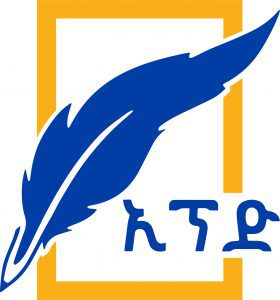
Developing countries are facing several challenges. Climate change and developmental issues are among the major ones exacerbated by environmental degradation, and currently affecting the lives of every segments of the society. A large number of people in Ethiopia are still poor, undernourished, and with no adequate health-care facility. They don’t have access to clean water, and die of preventable diseases.
In fact, both the environmental and developmental challenges are coming together to hurt the poor in the country. Therefore, the government and people of Ethiopia need a new homegrown economic and environmental model to tackle both climate change and developmental challenges.
The previous economic model which was just copied from the American and European could neither solve the developmental nor the environmental challenges of developing countries. Therefore, the new home grown economic model, not only serves the larger poor and vulnerable but also ensures that the environment is protected. This home grown economic model could solve the challenges of both societal and economic developments.
In Ethiopia, about 40 percent of the total population is poor, and with no access to electricity. The poor is also affected by diseases. At one point in time, Ethiopia’s forest coverage reached at 40 percent; but today it is almost 10 percent. This shows that the forest coverage has been lost because of destruction due to the need to utilize forest resources as firewood and construction materials.
The destruction of forest is meant soil erosion and loss of soil fertility. That in turn affects ground water recharge negatively. Hence, when there is high run off, agriculture will suffer. All these are caused by the destruction of the forest mainly for fuel purposes.
On the other hand, Ethiopia must grow business-wise with home grown economic model. The question is how can it be developed? I believe the solution is very simple. Ethiopia has large number of hydro-power potential. Recently, it has been building small, medium and large dams. This could help the country harness its resources and provide electricity for its people.
Ethiopia is also rich in sunshine and wind. Today, wind turbines, wind technology and wind energy is cheaper than hydro-power. The country needs to promote hydro-power and wind-generated energy to provide electricity for the people.
Alternatively, scholars believe that, if the electricity generated is still not sufficient, it needs to promote something like social forestry. There are two kinds of forestry development approaches. One is conservation of forest for environmental reasons and the other is social forest where you grow trees because you cut trees for different purposes. We all need trees. We need wood for cooking foods, making furniture, and for various other purposes. So, Ethiopia should have a program of social forestry where the people grow their own trees and for their demand.
This is the way Ethiopia has to move. Developing countries like Ethiopia do not need to follow American way of using gas to cook food. Gas is fossil fuel and causes climate change. Ethiopia has the opportunity to move to renewable energy sources such as hydro-power, wind energy, and social forestry, to meet the needs of the poor and to meet environmental and developmental needs.
Therefore, developing countries should look into different keys; we do not have to copy developed countries’ model. We have the opportunity to develop different keys in a friendly manner.
We all want development because we want to be happy, to prosper, to proceed and we also need our environment to be sustainable so that our development lasts not only for us but also for our children in the future. Our forefathers in Ethiopia used the environment abundantly, and they preserved the environment as well. But, our current emphasis is on economic development alone.
These problems are not only confined to Ethiopia, these are everywhere in developing countries. That is why we have to think while we take steps at all levels. Individuals, farmers, students, teachers, government, donor society and all others who support development, should preserve the environment.
Now, when the concerned bodies get-up-and-go for development, they should think about environment. They should understand the linkages between development and environment. Understanding the impacts of development, we have to reduce the negative impacts. To curb the challenges of climate change and development, knowledge, understanding and research are needed.
Besides, research should be done locally on local environmental systems. Knowledge coming from Europe or anywhere else may not be directly applicable to Ethiopia. What we need is to understand our own system here in Ethiopia, here in the highland, and Ethiopian agriculture. When we develop our agriculture, we develop our business, and keep our local environment safe and sustainable.
In addition, small farmers all over Ethiopia produced food for themselves and their community. So, they need support, they need input. This input comes from government or other organizations.
Above all, the homegrown economic model should incorporate how to protect the environment, and how to develop the agriculture; because, well integrated growth model should go to meet the needs of the society.
The Ethiopian Herald November16, 2019
BY ZELALEM GIRMA



